Related Research Articles

The Space Shuttle is a retired, partially reusable low Earth orbital spacecraft system operated from 1981 to 2011 by the U.S. National Aeronautics and Space Administration (NASA) as part of the Space Shuttle program. Its official program name was Space Transportation System (STS), taken from a 1969 plan for a system of reusable spacecraft where it was the only item funded for development.

Delta II was an expendable launch system, originally designed and built by McDonnell Douglas, and sometimes known as the Thorad Delta 1. Delta II was part of the Delta rocket family, derived directly from the Delta 3000, and entered service in 1989. There were two main variants, the Delta 6000 and Delta 7000, with the latter also having "Light" and "Heavy" subvariants. During its career, Delta II flew several notable payloads, including 24 Global Positioning System (GPS) Block II satellites, several dozen NASA payloads, and 60 Iridium communication satellites. The rocket flew its final mission, ICESat-2, on 15 September 2018, earning the launch vehicle a streak of 100 successful missions in a row, with the last failure being GPS IIR-1 in 1997. In the late 1990s, Delta II was developed further into the unsuccessful Delta III, which was in turn developed into the more capable and successful Delta IV, though the latter shares little heritage with the original Thor and Delta rockets.

The Delta rocket family was a versatile range of American rocket-powered expendable launch systems that provided space launch capability in the United States from 1960 to 2024. Japan also launched license-built derivatives from 1975 to 1992. More than 300 Delta rockets were launched with a 95% success rate. The series was phased out in favor of the Vulcan Centaur, with the Delta IV Heavy rocket's last launch occurring on April 9, 2024.
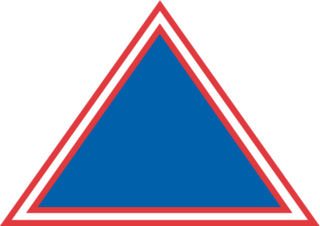
Delta IV was a group of five expendable launch systems in the Delta rocket family. It flew 45 missions from 2002 to 2024. Originally designed by Boeing's Defense, Space and Security division for the Evolved Expendable Launch Vehicle (EELV) program, the Delta IV became a United Launch Alliance (ULA) product in 2006. The Delta IV was primarily a launch vehicle for United States Air Force (USAF) military payloads, but was also used to launch a number of United States government non-military payloads and a single commercial satellite.
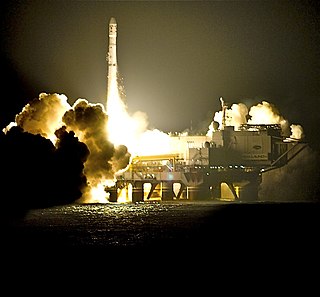
Sea Launch was a multinational—Norway, Russia, Ukraine, United States—spacecraft launch company founded in 1995 that provided orbital launch services from 1999 to 2014. The company used a mobile maritime launch platform for equatorial launches of commercial payloads on specialized Zenit-3SL rockets from a former mobile/floating oil drilling rig renamed Odyssey.
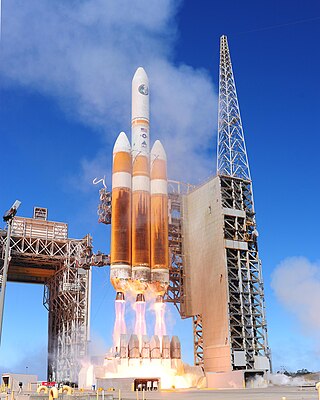
National Security Space Launch (NSSL) is a program of the United States Space Force (USSF) intended to assure access to space for United States Department of Defense and other United States government payloads. The program is managed by the Assured Access to Space Directorate (SSC/AA) of the Space Force's Space Systems Command (SSC), in partnership with the National Reconnaissance Office.

Titan IV was a family of heavy-lift space launch vehicles developed by Martin Marietta and operated by the United States Air Force from 1989 to 2005. Launches were conducted from Cape Canaveral Air Force Station, Florida and Vandenberg Air Force Base, California.

Space launch vehicle Volna, is a converted submarine-launched ballistic missile used for launching satellites into orbit. It is based on the R-29R designed by State Rocket Center Makayev and related to the Shtil' Launch Vehicle. The Volna is a 3-stage launch vehicle that uses liquid propellant. The warhead section is used for the payloads that can be either put into orbit with the help of an additional boost engine or travel along a sub-orbital trajectory to be recovered at the landing site. Volna can be launched from Delta III-class submarine or from land based facilities.

Delta III was an expendable launch vehicle made by McDonnell Douglas. Development was canceled before the vehicle became operational. The vehicle is the third generation of the Delta rocket family, developed from the highly successful Delta II to help meet the launch demand of larger satellites. While the Delta III never had a successful launch, some of the technologies developed were used in its successor, the Delta IV.
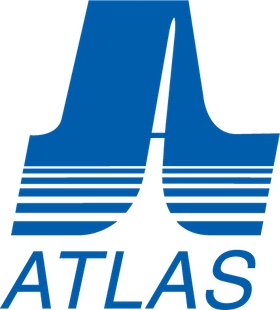
Atlas V is an expendable launch system and the fifth major version in the Atlas launch vehicle family. It was designed by Lockheed Martin and has been operated by United Launch Alliance (ULA) since 2006. It is used for DoD, NASA, and commercial payloads. It is America's longest-serving active rocket. After 87 launches, in August 2021 ULA announced that Atlas V would be retired, and all 29 remaining launches had been sold. As of June 2024, 16 launches remain. Production ceased in 2024. Other future ULA launches will use the Vulcan Centaur rocket.

Minotaur-C, formerly known as Taurus or Taurus XL, is a four stage solid fueled launch vehicle built in the United States by Orbital Sciences and launched from SLC-576E at California's Vandenberg Air Force Base. It is based on the air-launched Pegasus rocket from the same manufacturer, utilizing a "zeroth stage" in place of an airplane. The Minotaur-C is able to carry a maximum payload of around 1458 kg into a low Earth orbit (LEO).

The Graphite-Epoxy Motor (GEM) is a family of solid rocket boosters developed in the late 1980s and used since 1990. GEM motors are manufactured with carbon-fibre-reinforced polymer casings and a fuel consisting of HTPB-bound ammonium perchlorate composite propellant. GEM is produced by Northrop Grumman Space Systems. GEM boosters are used on the Atlas V and were previously used on the Delta II, Delta III, and Delta IV launch vehicles. A new variant, the GEM 63XL, flew as part of the Vulcan Centaur launch vehicle on 8 January 2024.
The Zenit-3SL was an expendable carrier rocket operated by Sea Launch. First flown in 1999, it was launched 36 times, with three failures and one partial failure. It was a member of the Zenit family of rockets, and is built by the Yuzhnoye Design Bureau. RKK Energia produced the Block DM-SL upper stage, whilst the payload fairing was produced by Boeing. Launches were conducted from the Ocean Odyssey platform anchored on the equator in the Pacific Ocean, at a point with 154°W longitude, about 370 kilometres east of Kiritimati.

Space Launch Complex 6 at Vandenberg Space Force Base in California is a launch pad and support area. The site was originally developed starting in 1966, but no launches occurred until 1995, as it was repurposed sequentially for three programs that were subsequently cancelled. Initially to be used for Titan IIIM rockets and the Manned Orbiting Laboratory, these were cancelled before construction of SLC-6 was complete. The complex was later rebuilt to serve as the west coast launch site for the Space Shuttle, but went unused due to budget, safety and political considerations. The pad was subsequently used for four Athena rocket launches before being modified to support the Delta IV launch vehicle family, which used the pad for ten launches from 2006 until 2022. The last Delta IV launched in September 2022, and SpaceX leased SLC-6 in 2023 to convert it to launch Falcon 9 and Falcon Heavy starting in 2025.

United Launch Alliance, LLC (ULA) is an American launch service provider formed in December 2006 as a joint venture between Lockheed Martin Space and Boeing Defense, Space & Security. The company designs, assembles, sells and launches rockets, but the company subcontracts out the production of rocket engines and solid rocket boosters.
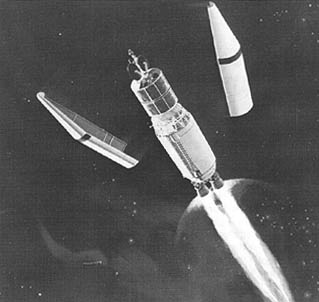
A payload fairing is a nose cone used to protect a spacecraft payload against the impact of dynamic pressure and aerodynamic heating during launch through an atmosphere. An additional function on some flights is to maintain the cleanroom environment for precision instruments. Once outside the atmosphere the fairing is jettisoned, exposing the payload to outer space.

The H-II (H2) rocket was a Japanese satellite launch system, which flew seven times between 1994 and 1999, with five successes. It was developed by NASDA in order to give Japan a capability to launch larger satellites in the 1990s. It was the first two-stage liquid-fuelled rocket Japan made using only technologies developed domestically. It was superseded by the H-IIA rocket following reliability and cost issues.

The Delta IV Heavy was an expendable heavy-lift launch vehicle, the largest type of the Delta IV family. It was the world's third highest-capacity launch vehicle in operation at the time of its retirement in 2024, behind NASA's Space Launch System and SpaceX's Falcon Heavy and closely followed by CASC's Long March 5. It was manufactured by United Launch Alliance (ULA) and was first launched in 2004. ULA retired the Delta IV Heavy in 2024. Future ULA launches will use the new Vulcan Centaur rocket. Delta IV's final flight was on 9 April 2024.

The Delta Cryogenic Second Stage (DCSS) is a family of cryogenic-fuelled rocket stages used on the Delta III, Delta IV, and on the Space Launch System Block 1 launch vehicles. The DCSS employs a unique two-tank architecture where the cylindrical liquid hydrogen (LH2) tank carries payload launch loads and forms the upper section. An oblate spheroid tank filled with liquid oxygen (LOX) and the engine are suspended from the LH2 tank and covered by the interstage during initial launch.
References
- ↑ "Delta III Takes a Dip". WIRED. Retrieved 2018-10-24.
- ↑ "Delta III Launch Vehicle". 2001. Archived from the original on November 14, 2001.
- ↑ "Orion 3 at 139° East (Launch failure)" . Retrieved 7 September 2022.
- ↑ "Delta 3 rocket falls short but still a success, Boeing says". Spaceflight Now. August 24, 2000.